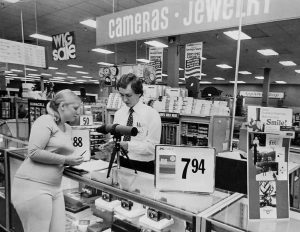
Modern’s Top 47 Cameras from 1979 is the first of these lists I’ve published that originally appeared after I was born, so I’ve officially entered into an era in which I am older than the list itself!
Much like the rapid changes in camera technology in the late 1950s when photographers abandoned rangefinders in favor of SLRs and “electric eyes” started to appear on dozens of new models, the late 1970s saw the dawning age of fully automated SLRs and point and shoot cameras.
What was considered state of the art in 1974 was already outdated by 1979 and if camera makers wanted to keep filling their pockets with money from new camera purchases, they had to get on board and embrace new technology.
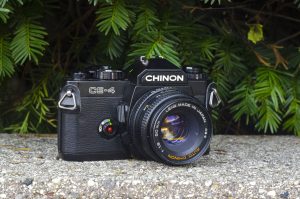
The very first sentence of this list from the December 1979 issue of Modern Photography plainly states that this year’s list starts off with a strong emphasis on fully automatic 35mm SLRs. Rangefinders, medium format TLRs, and professional cameras all take a back seat to models like the Canon A-1, Chinon CE-4 Memotron, Nikon FE, Olympus OM-2N and Pentax ME. The first non automatic camera makes it’s appearance on the 22nd page, suggesting how important this segment was in 1979.
Unlike Modern’s previous top 47 lists, I have experience with many of these models, either featuring reviews on this site, or having used them in some capacity some point in my life. Looking through the list, I can attest to using 19 of these models.
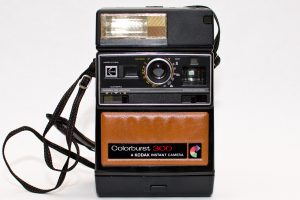
Of the ones that I haven’t played with, there’s a mix of ones made by Hasselblad and Bronica that I would still love to own, and some head scratchers like the Kodak Colorburst 300, Kodak’s ill-conceived attempt at creating their own cartridge based instant film camera. Another curious inclusion is the Topcon RE 300, which on paper seems like a decent electronic SLR made with a Copal Square shutter, but using the incredibly antiquated (for the time) Exakta lens mount, and a body not even built by Tokyo Kogaku since the company was on the verge of exiting the 35mm camera market. I’ll acknowledge Modern’s editors wouldn’t have had a crystal ball that could have told them Topcon cameras would disappear from the market less than a year later, but they had to have seen the writing on the wall, and to suggest this model was worthy of a “best of” nomination just seems weird.
Strangely absent from this list were auto focusing point and shoot models like the Canon AF35M or Konica C35 AF which for the time would have been considered cutting edge and still had quality 4 and 5 element lenses that would have compared favorably to other cameras on this list. Perhaps they would appear on the 1980 list…
As is the case of any year end list of the top anything of any product, I don’t exactly agree with all 47 models here, as I’m sure people reading this article over 40 years ago didn’t agree with either, but it’s still a fun way to reflect back on models we consider vintage today, at a time when they were brand new.
And not that it has anything to do with cameras, but here is the video for The Smashing Pumpkins’s 1979.
All scans used with permission by Marc Bergman, 2020.

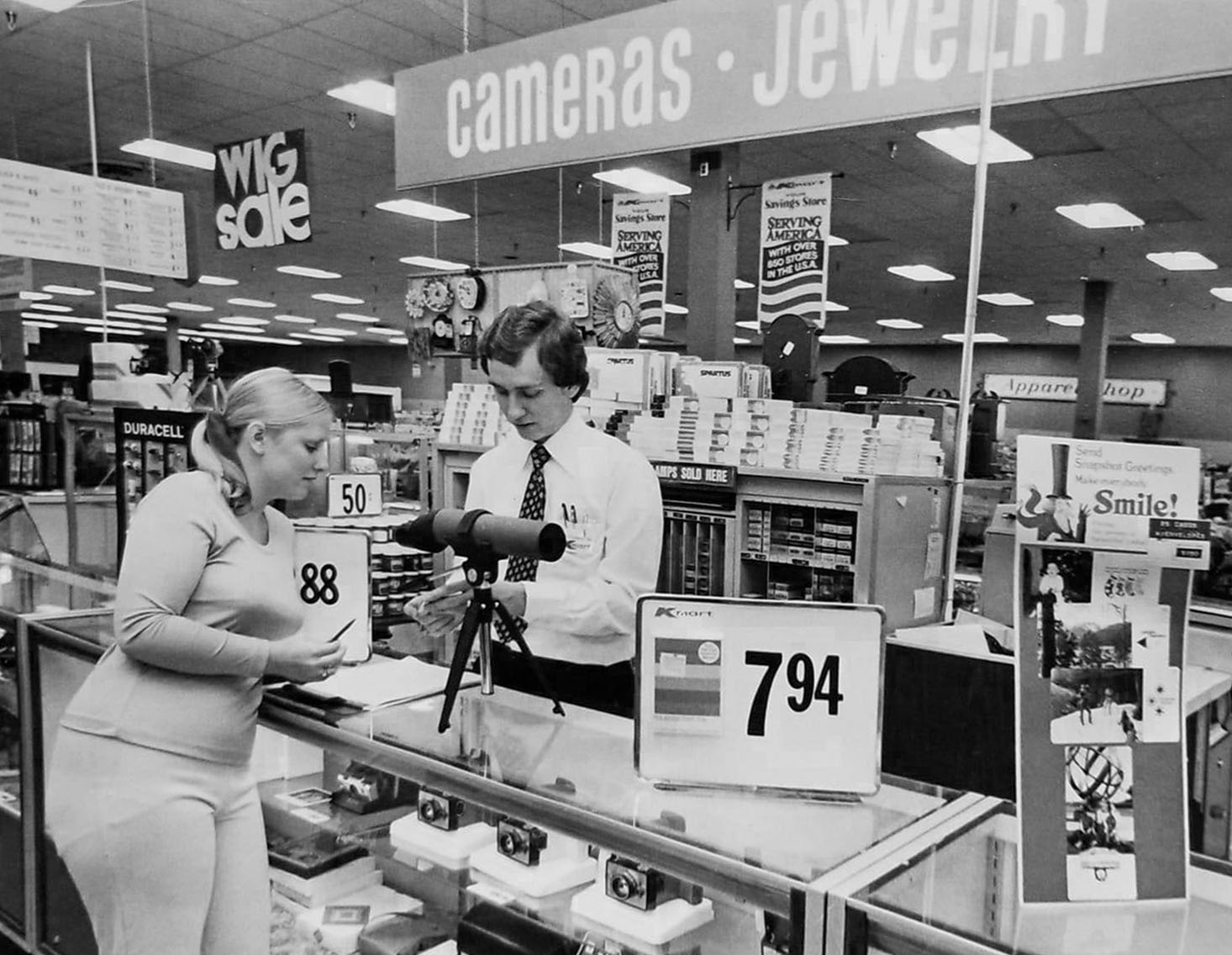
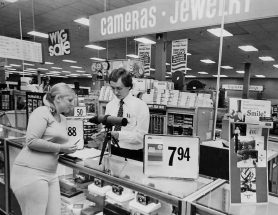
I couldn’t quite put 1979 in context until I saw the Topcon Super Dm, the The year of ‘winder envy’ popped up. I owned an Nikon FM and wondered if it was possible to adapt a Topcon Super D Winder to it. I’d seen an article about a “TopNik,” in which a Topcon Winder had been adapted to fit a Nikon F2. Was the Nikon MD-11/12 the only option for a small town community newspaper photographer? (It was, and I found one on eBay in 1980.)
I agree that the Canon AF35M was a hot item, since I eventually bought one to see if this auto focus thing was viable. Makers of non-AF 35mm SLRs brought out electromechanical monstrosities as the Minolta Maxxum blitz began. (I never bought into it, since I had OK vision, and Macrophotography wasn’t a goof fit for “can it focus on this?” AF systems.)
I went in different directions, photographically, settling the “Hasselblad?” question with a Bronica
ETR-C; “getting small” meant a Canon 110ED. The automatic 35mm SLR battle had me crossing battle lines with a Nikkormat EL and a Canon EF. (I preferred the Canon EF, since I still had most of a working camera with dead batteries.) Contax/Yashica was a big thing, but the “powerless brick” syndrome kept me away. (I kept at least one PX-28L in the camera bag for the Bronica and the Nikkormat EL.)
As for Instant photography, I went retro, seeking out a Polaroid 110A and having it adapted to use Polaroid 100/660-series pack film. (A budget Polaroid 180/195 alternative!) SX70? Naah, I’m a Real Photographer! (My maternal uncle, a collector of “PHD” cameras, was a Polaroid Sonar One Step user. His first 35mm SLR was a Minolta Maxxum, a bit later.)
Ebay was a thing in 1980?
Oops, I got ahead of myself! Do you remember “Shutterbug Ads.” a newsprint, used-camera publication of the 1970’s? I think that’s where I bought a used Nikon Md-12 for the Nikon FM/FM-2. That’s where I ran across Ed Romney (How to repair your camera), Kalton C. Lahue (“Glass, Brass, and Chrome,” the book on American cameras), and affordable Canon and Nikon “Leica screw mount” camera bodies and lenses. That’s also where I found a Contaflex III and IV, along with lenses.
Shutterbug Ads eventually turned into (I think) the Shutterbug website, Ed Romney went off to argue camera design with Dr. Ernst Leitz, and even Leica IIIa bodies became amazingly expensive. eBay became a hunting ground after the turn of the century, when I looked for ways to upgrade a Mac SE 4/40 and found a PowerBook 1400cs. Then there was an H&W Control Film and Developer phase which had me hunting for a Nikon PB4/PS4 combo. (Or was this also a “Shutterbug Ads” acquisition?;)
Mike, as this list gets more up-to-date, my “hit” rate of actual users, as apart from the models I subsequently acquired for my collection, goes up. Brand new items were the Contax 139, Leica R3, Mamiyaflex C330f, replaced later with a C330S, and the ETRS-i, if you can include this as a “near miss” so to speak. Used cameras were the Minolta XD-7 (11), XA, and Rolleiflex SL35E. The Rollei came in for some stick for what it was not, I believe, not for a very sound and pleasant camera to use.
The Pentax 110+ four lenses, and Minolta 110 Mk.II were acquired some years ago purely out of interest for my collection, as was an OM-1 which was added for curiosity, not as a user, more than anything as I was intrigued by all the comments about its v/f. As its also an iconic model, I could justify adding one to my collection. I picked up one in very good condition and cheaply. I discovered why – the shutter curtains weren’t unlatching properly at 1/1000 sec. But everything up to and including 1/500 seems fine.
I purchased the KODAK Handle instant camera in 1978, when I was in the USAF basic training. It paid for itself in one day, selling photos of recruits in basic training – so they could send home a photo of themselves to family/friends/girlfriends. I did very well selling these photos @ $3 a pic. Actually the cameras were pretty decent as were the pics. At one point they made a peal off pack – so you discarded the chemical pod from the photo.